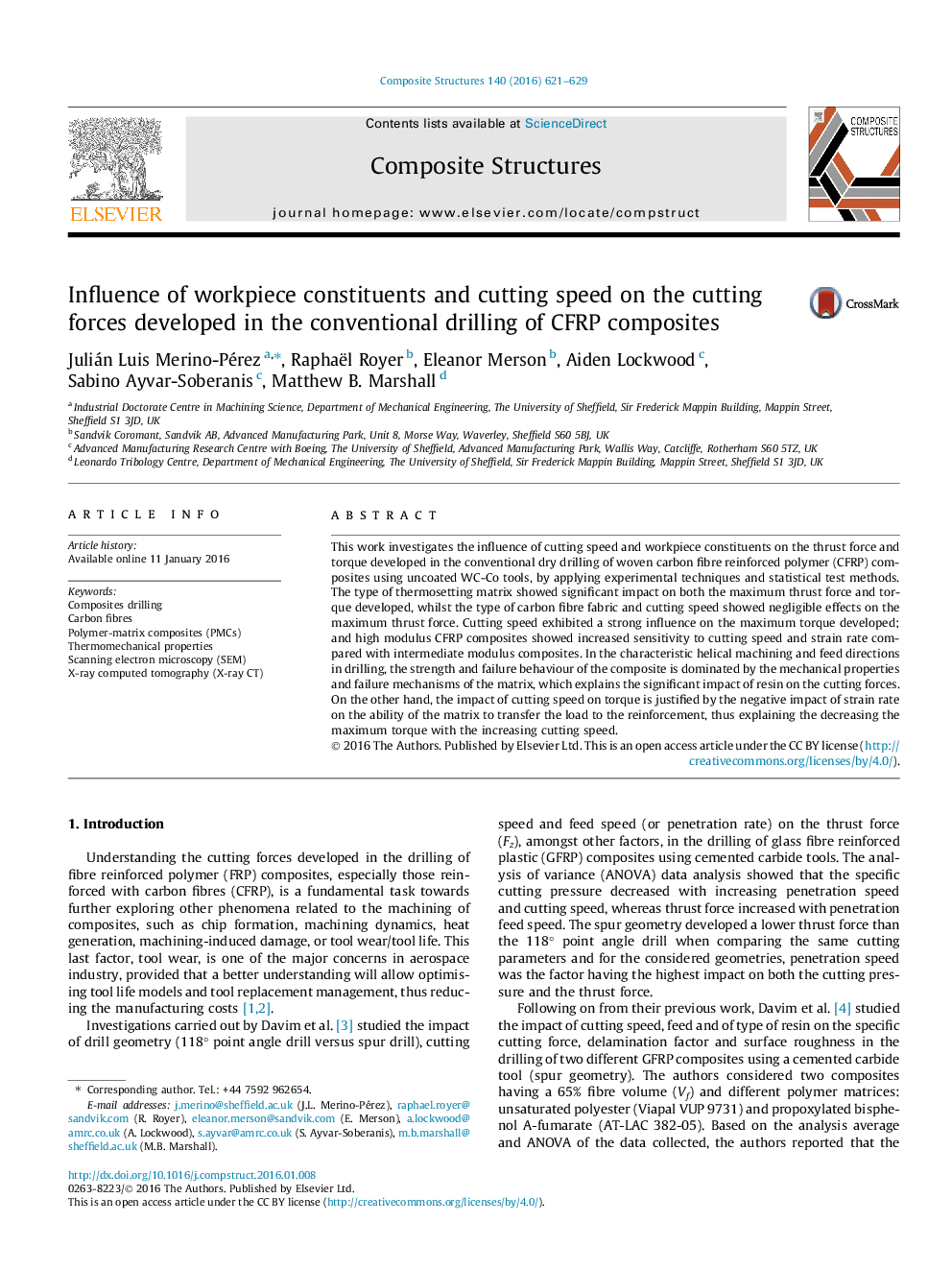| Article ID | Journal | Published Year | Pages | File Type |
|---|---|---|---|---|
| 6706176 | Composite Structures | 2016 | 9 Pages |
Abstract
This work investigates the influence of cutting speed and workpiece constituents on the thrust force and torque developed in the conventional dry drilling of woven carbon fibre reinforced polymer (CFRP) composites using uncoated WC-Co tools, by applying experimental techniques and statistical test methods. The type of thermosetting matrix showed significant impact on both the maximum thrust force and torque developed, whilst the type of carbon fibre fabric and cutting speed showed negligible effects on the maximum thrust force. Cutting speed exhibited a strong influence on the maximum torque developed; and high modulus CFRP composites showed increased sensitivity to cutting speed and strain rate compared with intermediate modulus composites. In the characteristic helical machining and feed directions in drilling, the strength and failure behaviour of the composite is dominated by the mechanical properties and failure mechanisms of the matrix, which explains the significant impact of resin on the cutting forces. On the other hand, the impact of cutting speed on torque is justified by the negative impact of strain rate on the ability of the matrix to transfer the load to the reinforcement, thus explaining the decreasing the maximum torque with the increasing cutting speed.
Keywords
Related Topics
Physical Sciences and Engineering
Engineering
Civil and Structural Engineering
Authors
Julián Luis Merino-Pérez, Raphaël Royer, Eleanor Merson, Aiden Lockwood, Sabino Ayvar-Soberanis, Matthew B. Marshall,
